
Five Minute Blockchain – No. 43
05.01.2023
Estimated reading time: 4 min 38 secs
Welcome. All the best to you for 2023 from the TruBlo consortium and the funded projects.
TruBlo aims to find new and innovative applications for “trustable content on future blockchains”. Given last year’s turmoil, “future blockchains” (a term we used from the beginning) seems the correct perspective now. There are many aspects that need to be sorted out so that the expectations and hopes towards blockchain technology can help all of us towards the next level of high quality, and now, and now, and information technology.
2023 will be the third and final year of TruBlo. We have concluded the three open calls. Now the goal is to analyse, connect and learn from the experience and findings of our 45 funded projects. Step by step, we will publish results from individual projects and the entire ecosystem of teams and ideas.
What do you expect of 2023 about trustable content and the broader use of blockchain technology? What are the key trends? Will blockchain technology make a jump forward, or will development slow down?
QUOTE OF THE WEEK
“The administration believes that the digital asset space is unregulated and thinks they can get away with anything. They are eager to plant a flag and send a message.”
– Renato Mariott, a former federal prosecutor for the Department of Justice Securities and Commodities Fraud Unit Renato Mariott, on CoinDesk TV’s “First Mover“
TRUST
The debate over the TikTok ban in the US
There is considerable debate about whether TikTok, the social media app with short videos, should be banned in the US. There are two main reasons: Young users seem to be glued to their smartphones consuming entertaining, never-ending content – this observation leads to concern among parents and officials. Another factor is a deep distrust of whether TikTok, which a Chinese company has developed, uses the platform to collect data about their global, often western, audience. Because US and Chinese relations deteriorated last year, the debate about banning TikTok entirely is simmering.
Currently, Brendan Carr, commissioner for the powerful FCC (Federal Communications Commission) in the US, points to India as an example. TikTok was banned almost two years ago in India, and Carr is quoted saying that India set a “significant precedent”.
A recent step in the US was that TikTok was banned from the smartphones of people working for the House of Representatives. A reason for this step was concern over potential surveillance and data collection.
TechCrunch: “India set a significant precedent by banning TikTok, FCC commissioner says.”
CONTENT
Microsoft plans to use ChatGPT for better answers on Bing, resulting in a challenge to Google
Chat GPT from OpenAI, released by the end of November 2022, has created a lot of excitement regarding the capabilities of artificial intelligence. Have you already tried to let ChatGPT write a text for you? The software, currently free to use, performs various writing tasks based on user prompts, and the results are impressive.
Now ChatGPT will be used as a tool to compete with Google. According to “The Information”, Microsoft plans to release a version of its search engine Bing, which uses ChatGPT to answer user searches. The goal is to have better answers because the user’s intent might be better understood and answered this way.
Microsoft has invested one billion US-Dollars in OpenAI. Another small but interesting fact: Bing might only be the second choice in the search engine market. But it is a serious business. Microsoft generates a yearly revenue of $9 billion US Dollars in advertising. Furthermore, the market share of desktop searches for Bing has risen from around 4% to now almost 9% since 2019.
Reuters: Microsoft aims for AI-powered version of Bing
Background: ZD Net: What is ChatGPT, and why does it matter?
Apple unveils books narrated by artificial voices
The Guardian:
“Apple has quietly launched a catalogue of books narrated by artificial intelligence in a move that may mark the beginning of the end for human narrators. The strategy marks an attempt to upend the lucrative and fast-growing audiobook market – but it also promises to intensify scrutiny over allegations of Apple’s anti-competitive behaviour.”
The Guardian
How generative AI might turn the open web into a Dark Forrest
How do you prove you are a human in a system where robots generate more interactions? Here is a link to a thought-provoking essay discussing the perspective of a future internet turned into a so-called “dark forest”. The “dark forest theory” describes an increasingly life-like but life-less online state. Don’t miss the great graphic that stacks the different layers of the web (open web, “cosy web” with tight spaces, dark web).
Web3 music ecosystem in 2023 – 140 companies and platforms
One big hope for creators is that blockchain technology could enable a direct channel to fans without an intermediary. Right now, this does not seem very realistic. But the technology, in theory, would allow for direct sales of NFTs – be it photos, videos or music.
How does the Web3 music landscape look right now? Click on the link to see a comprehensive overview created by Musciben & published on Twitter.
BLOCKCHAIN
TON Network launches decentralised file-sharing platform
The Telegram Open Network (TON) was started by Telegram in 2019. Now a new offering called TON storage wants to overcome limitations in long-term storage. The core idea of TON storage is to offer financial incentives to node operators.
Quote:
“Anyone can become a node operator on the TON network and receive payments from other users for hosting files — even if operating just one node”.
The Block
Additional links: TON.org
The state of blockchain consortiums in 2022
“Consortia in the blockchain domain comprise enterprises collaborating to expand their work on shared ideas and objectives. Blockchain consortia bring competitors under a common roof to solve shared problems using decentralized network solutions.”
Question: How did these collaborations evolve in the face of recent market troubles?
Blockdata
SHORT LINKS
Thank you for reading. If you have questions or suggestions, please contact us via info@trublo.eu.

August 25, 2022• Issue No. 39
Five Minute Blockchain
Welcome to a new edition of the TruBlo newsletter. We are funding 45 early-stage blockchain ideas to explore new options for “trusted content on future blockchains”. A list of all TuBlo projects is here: https://www.trublo.eu/projects/Our main question for selecting news and links below: How is the field .of blockchain, content and trust evolving?
Updates this week:
Estimated reading time: 4 min 10 sec
TRUST
Spyware use in Europe, homemade
In Greece, Thanassis Koukakis, a financial journalist, discovered spyware on his phone. This case seems to be part of a whole wave of spyware uses.
“Over the past 13 months, it has been revealed that spyware had targeted opposition leaders, journalists, lawyers and activists in France, Spain, Hungary, Poland and even staff within the European Commission, the EU’s cabinet-style government, between 2019 and 2021. The bloc has already set up an inquiry into its own use of spyware, but even as the 38-person committee works toward producing a report for early 2023, the number of new scandals is quickly mounting up.”
One key finding – the spyware was developed in Europe, not elsewhere:
“What sets the scandal in Greece apart is the company behind the spyware that was used. Until then the surveillance software in every EU scandal could be traced back to one company, the notorious NSO Group. Yet the spyware stalking Koukakis’ phone was made by Cytrox, a company founded in the small European nation of North Macedonia and acquired in 2017 by Tal Dilian—an entrepreneur who achieved notoriety for driving a high-tech surveillance van around the island of Cyprus and showing a Forbes journalist how it could hack into passing people’s phones. In that interview, Dilian said he had acquired Cytrox and absorbed the company into his intelligence company Intellexa, which is now thought to now be based in Greece. The arrival of Cytrox into Europe’s ongoing scandal shows the problem is bigger than just the NSO Group. The bloc has a thriving spyware industry of its own.”
WIRED
A deep dive into the fall of Three Arrows
Long report about the founders, set-up and the reasons for the downfall of the crypto hedge fund. Apparently, “playing with money” was a big part of it, sheltered by a hybrid that the complex technology would make the blundering hard to detect.
“Bear markets in crypto tend to make any stock-market action look like child’s play. The crashes are so severe that insiders call it “crypto winter,” and the season can last years. That’s where Three Arrows Capital found itself by the middle of January 2022, and it was poorly equipped to weather it. The GBTC position ate an ever-larger hole in 3AC’s balance sheet, and much of its capital was tied up in restricted shares in smaller crypto projects. Other arbitrage opportunities had dried up. In response, Three Arrows seems to have decided to ramp up the riskiness of its investments in hopes of scoring big and getting the firm back on a solid footing. “What made them change was just overreaching for returns,” says a major lending executive. “They were probably like, ‘What if we just go long? In February, Three Arrows took one of its biggest swings yet: It put $200 million into a buzzy token called luna, which was founded by a brash, alluring South Korean developer and Stanford dropout named Do Kwon, with whom Davies and Zhu had been hanging out in Singapore.”
New York Magazine
CONTENT
How a small, slightly different view might grow into deep distrust
Even if views on a complex issue differ, it should be possible to find a consensus for the best solution over time. A factor in this should be the amount of available information – the more, the better. That would be an assumption based on common sense. But it might not be true at all. Instead, the abundance of information might amplify small different views into deep distrust of “the other side”.
„We show that small biases may lead to substantial and persistent divergence in both trust in information sources and beliefs about facts, with partisans on each side trusting unreliable ideologically aligned sources more than accurate neutral sources and also becoming overconfi- dent in their own judgment.”
Could the abundance of information on the web and social media overwhelms and confuses humans? And that this leads to more extreme positions instead of compromise?
Stanford University
Dark Patterns: Bad when used by others, but ok when used by your company?
Benedict Evans points to two articles published in The New York Times: One criticising the use of “dark patterns” on technology platforms. And other technical articles where the news organisation talks about its optimisation to gradually funnel online visitors into subscriptions.
The use of technology to funnel first-time visitors gradually towards a possible subscription is not automatically a “dark pattern”. The expression describes UI/UX layouts of websites where users have difficulty saying “no”. Such patterns are used in all kinds of applications, often leading to complaints by users who only later find out they were tricked into consent for a setting, for marketing purposes or even a subscription which can not be cancelled anymore.
But Evans has a point that often, double standards apply to the use of
The technical report about using Machine Learning to gain more subscribers does not mention such approaches. But the point is: As everyone tries to optimise the business revenue, the occurrence of tricks, cover-ups and harmful business practices will likely not go down but up. One fact from the published article: After reaching 10 million paying subscribers, the NYT aims to reach 15 million by 2027. Such ambitious growth often applies tricks to achieve such goals in time. High pressure to reach goals was a significant reason for Volkswagen’s scandal around engine emissions.
The New York Times: Stopping the manipulation machines ($)
The New York Times: How The New York Times Uses Machine Learning To Make Its Paywall Smarter
BLOCKCHAIN
In Argentina, Crypto is more practical for many transactions than cash
A recurring doubt regarding the future of cryptocurrencies (and blockchain) is the question of practicality. Where is the practical, day-to-day use?
One country where this is different is Argentina, a country where cryptocurrencies have a growing appeal, despite the volatility.
Two main reasons: The local currency, the peso, has lost value for decades. The second problem is that banks have imposed restrictions on bank accounts. Having a bank account in another currency with a bank outside of Argentina is no real option because one would have to travel there to get the money. This is why many people in Argentina store money they have in bricks – they buy bricks when they have money and store them.
“Argentinians who use crypto are increasingly untethered from the local Argentinian economy and increasingly plugged into the global cloud economy. Crypto is providing new solutions to problems that Argentina has faced for generations, and many Argentinians are excited about its potential to make it easier and safer to make, use, and store money.”
Big Think
People in El Salvador want reliable banking.
“N1co is Central America’s first neobank, thriving because El Salvador still needs basic financial inclusion.”
Rest of World
Bitcoin Depot to go public at an $885 million valuation
The company is operating a network of Bitcoin ATMs in the US.
“Founded in 2016, Bitcoin Depot claims to be the largest provider of such ATMs in North America with more than 7,000 kiosks in the region. These ATMs function by connecting with a wallet and, after a verification process, allow the user to insert fiat money to receive BTC, LTC or ETH in their wallets.”
The Block
The percentage of crypto investors did not grow in the past 12 months
According to a survey by PEW Research, the number of people dealing with crypto has remained at the same level as a year before, at roughly 16%.
(In 2020) Pew researchers asked 10,371 Americans if they have “ever invested in, traded, or used a cryptocurrency.” Some 16 percent of Americans said they had. Last month, the nonprofit asked another sample group — slightly smaller, at 6,034 Americans — the same question. And again, 16 percent said they had invested or traded in the alternate currency.
Washington Post ($)
Related:
- 64% of crypto-versed parents want crypto to be taught in schools Cointelegraph
- 72% of Russians say they never bought Bitcoin Cointelegraph
Ethereum Merge to begin September 6
The Ethereum Foundation says it will begin the Merge on September 6, split into two parts, the second running between September 10-20
The Block
Short links
- cbETH: Coinbase offers liquid staking service & token for Ethereum ahead of the Merge The Block
- Authorities in Afghanistan shut down 16 crypto exchanges in one-week Coindesk
- Revenue is a feature. Some companies can think about it later; others must figure it out earlier. Benedict Evans
- Mana: “BlackRock for the new economy” TechCrunch
- BalkanID will use AI for Identity Governance TechCrunch.
- Privado helps developers be compliant with privacy laws Forbes
- ThirdWeb raises 24 million for web3 development kit TechCrunch
- Polygon founder launches fund with $50 million for web3 investments Cointelegraph
- How traditional banks cope with digital assets Blockdata
Thank You for reading. Please forward this newsletter to colleagues: Click here to subscribe.
Would you happen to have any feedback or suggestions? Contact us via info@trublo.eu
Photo by Clark Tibbs on Unsplash

FileChain aims to extend existing, often complex document workflows with simple yet secure sharing options, similar to a decentralised blockchain platform. The underlying software is based on Java, making it more straightforward for many companies to adopt and customise their existing systems.
Currently, FileChain is a start-up company with offices in Sweden and the UK. Here is an interview with the founder and CEO.
INTERVIEW
Mirko Lorenz: You are the founder and CEO of FileChain. Can you briefly say what brought you there?
Sylvain Vittecoq: The original idea of why we created FileChain came from a day in 2016 when I realised that I had to provide input for my preference for a window or aisle seat on every airline website every time I would book a flight ticket. I thought there must be a way for me just to grant some airlines access to this one piece of information about my preference. This is how FileChain started. We are using distributed ledger technology to solve this kind of problem. My example was B2C. Decentralisation and delivery of such individual services are probably some years away. But for B2B markets, we are here with FileChain. Our software is a new way to provide blockchain distributed ledger services for B2B transactions.
About
Sylvain Vittecoq is an entrepreneur and IoT expert. Originally from France, he has been in technology and management roles since 1996. Vittecoq lives in Sweden. LinkedIn

Photo: Sylvain Vittecoq, via FileChain https://www.filechain.com
Question: From your point of view, decentralised exchange of information blockchain functionality could help to free many workflows from having to file the same data again and again and again because we can access such pieces with the permission of the owner?
Sylvain Vittecoq: Everything is highly centralised. In any company, you will have ERP systems based on databases found in every single company and public administration. It is then the job of all integrators to enable these systems to talk to other systems with security layers to cross. Whenever there is an audit, there is a need to decide who can be trusted. My thinking is: By now, we can use a technology called the blockchain, which you can place in the middle. It is owned by no one but can be used by all parties involved to achieve a common goal. This approach puts the current logic upside down, and we can get there with a piece of technology placed between many parties with common interests. This opportunity is why I believe that this technology is not just a short-lived trend but that blockchain, in general, will succeed.
At what development stages is FileChain as a company? Is it a start-up? How is it funded through revenue or venture capital? How many people are working for you?
Sylvain Vittecoq: We are a start-up. We are less than ten people, which is still a small team. We got bootstrapped. We used our funding for development so far in stealth mode. We got a small investment in December 2020 from a UK seed investor. We are just running and financing our activities based on customers and incoming projects. We are still a relatively small company, with a substantial technical stack, which is now ready for production. We are just starting commercialisation.
What is your pitch to potential companies? Why should a company use FileChain?
Sylvain Vittecoq: We have a different vision for ledger technology. We don’t believe in public blockchains. Instead, we believe in federation or private blockchains which would be run and managed by a more comprehensive number of parties, and it might be a group of companies focused on supply chains for instance.
“We don’t believe in one ledger in charge of everything”.
Secondly, we don’t believe in one ledger in charge of everything, which does not make sense. Therefore, our ledger setup is different; we focus on the enterprise space. Thirdly, we want our blockchain ledger to be highly more economical than what is available today and way more performant. What needs to be understood is what it costs you to use specific software every day when everything goes well – and would I need to pay when something things go terrible. This is a fundamental question for every decision-maker.
Looking at specific blockchain tokens with gas fees, we think that many current blockchain use cases are based on speculation. It is almost impossible to predict what it will cost you down the road. You know, what will be your cost down the road. FileChain is none of that. We automate, but not through smart contracts because they are expensive and very slow to run. We do our automation, but differently. If anything goes wrong when using new blockchain platforms, no one can provide actual liability. FileChain is different here: We want to make sure everyone knows from the start who would be blamed for what and who would have to pay what. Our focus is not on smart contract utility tokens but on a decentralised ledger that can reliably transport documents between parties, the right legal professionals. And I mean regular contracts, not smart contracts, actual, regular paper-based contracts. For example, we believe that it is possible to achieve a significant change in how to handle paper and permissions in the global shipping trade. There is an immense potential to save money and drastically reduce current operational costs. Implementing news ledger technology could generate new revenue streams because the new features can disrupt the current market and create a new market.
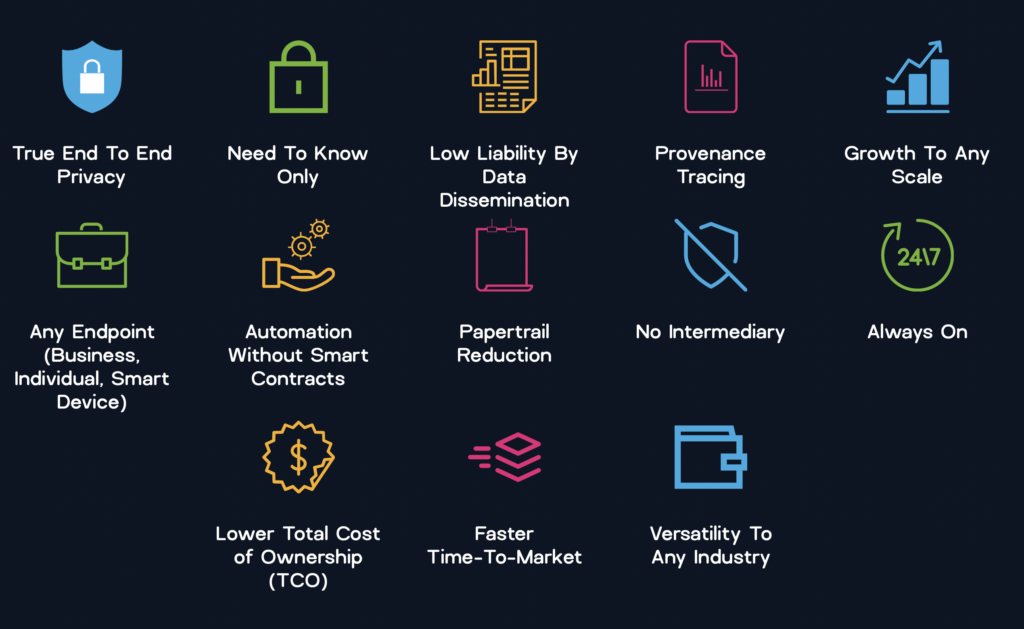 Visual: Benefits Source: FileChain (Screenshot Website)
Visual: Benefits Source: FileChain (Screenshot Website)
“We don’t forget the old world. We aim to integrate ERP solutions with blockchain.”
So, in other words: FileChain is a modern approach to cloud storage that uses some aspects of a blockchain. So FileChain creates a bridge between the old world and the business world of the future. Is that correct?
Sylvain Vittecoq: Yes. We don’t forget the old world. We aim to integrate ERP solutions with blockchain. We simply don’t forget large companies that have invested 100.000s lines of code. Our technology is a true full-stack ledger from layer 1. So, we have no dependency on any other ledger. This is not a fork of the code from Ethereum, Bitcoin, or any other token platform. Instead, this is 100% FileChain code for the nodes. These nodes have the task to verify the signatures of all the transactions. Those nodes would be one piece of software. We also have an agent, which is the other piece of the software we provide, for people to send or receive millions of transactions. Our goal is to make this much cheaper and more performant than today.
Could you describe a typical company from a specific industry that is a FileChain client?
Sylvain Vittecoq: We are getting traction because we not only provide file and data exchange. On top of that, we can implement transactions to transfer value from A to B. We offer a complete toolkit to underpin the needed paperwork for many types of transactions. Shipping is a good example. You may want to have many companies being able to onboard and identify themselves. This is what they can do with our ledgers. Once they have a public-private key pair, they can authenticate themselves and provide all the required documentation to identify everyone on that ledger fully. Even the shipping containers could authenticate themselves with a serial number and some keys. This is the perspective for the future: A shipping container could send a document or form in JSON XML. Someone from a shipping company could send a Word or a PDF document to another entity present on the ledger. That is the focus of FileChain: To streamline paperwork for all types of transactions – before we get into a transfer of value, which – we believe – is at most five per cent of all the transactions needed for many types of business.
Logistics and shipping are the focus of FileChain for now?
Sylvain Vittecoq: Many of our current use cases are in shipping because there is a lot of paperwork. We are supporting supply chains because you must trace everything. But such a system helps track any valuable goods or many companies. Another use case is when you need to follow valuable cars, watches, or other luxury goods such as art. All such workflows will require packaging the correct information and sharing it with specific people or companies. And never share anything with anyone else. That is another crucial element of FileChain technology, as we offer privacy by design.
“I can decide to share it, in that second, that hour, within days or even months, to share the same content with one or 5000 other recipients instantly”
What you offer is a modern way to exchange information, but with a specific and innovative approach how to share sensible parts such as a person’s name, address, bank account, and so on?
Sylvain Vittecoq: Let’s say I want to share a document with you using FileChain. I can do this using drag-and-drop from my desktop. Encryption is added automatically. When the file leaves my computer, it is now embedded as a FileChain transaction as in-chain storage. Once the transaction gets into the ledger, I’m still the only one who can decrypt that content. I can decide to share it, in that second, that hour, within days or even months, to share the same content with one or 5000 other recipients instantly. I am not going to clone that document again on the ledger. Instead, I will give everyone access to that same content sitting on the ledger. I have complete control over who can access this information. I can even reverse access.
What is the technology you use for FileChain? Is it a specific blockchain protocol?
Sylvain Vittecoq: FileChain is a full-stack offering, and our reference implementation is in Java, which means we have no dependency on anything else. So, no exotic language. And, going back to my initial point, we don’t forget the work that has been done before because older systems are already running and existing today. This is the reason why our reference implementation is in Java. We have a full-stack offering from Layer 1 up to the SDK, including rest APIs for anyone to implement the business logic into other applications. This one ledger can run multiple applications with multiple use cases.
Is it that many clients want to use the benefits of the blockchain approach but have to be able to understand the language in use?
Sylvain Vittecoq: That’s precisely why we do not use a language like Solidity, which is used for many smart contracts but is to some extent prone to errors. From a liability standpoint, this is a no-go. Because in many business settings, you cannot guarantee that the smart contract will execute as intended. So that’s why we don’t have smart contracts for FileChain. Our focus is different: We want to have an application that many engineers can work with efficiently, which they can connect with existing ERP systems quickly. Through such projects, blockchain can achieve mainstream adoption, in our view. To get there, we need a low barrier of entry for software engineers. This is the same for the hosting and the management of those infrastructures. With FileChain, we have a straightforward set-up for the network and to join additional nodes. We don’t want people to spend a lot of time building many tools. That is pointless. What you want is just to get done with your actual business so that you can save money or make money. It is precisely what we try to achieve every day.
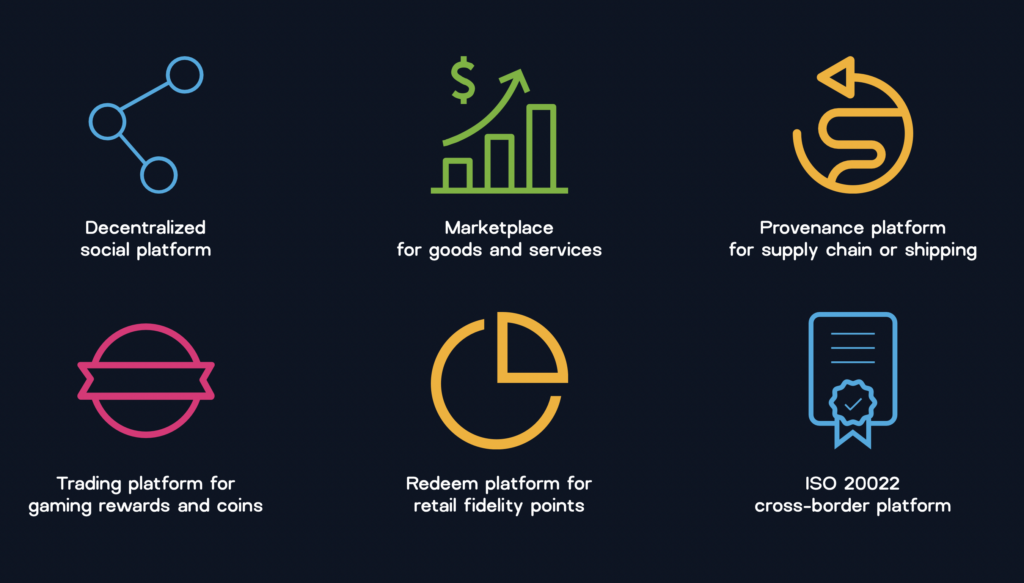
Examples of implementations using FileChain. Source: FileChain
Would you be open to collaborative projects? For example, could creators of other innovative distributed concepts work together with you? Or would that be complex?
Sylvain Vittecoq: Partnerships are, at the same time, simple and complicated. Simple in the sense that our core technology is Java. We should exclude the full integration of an ERP system because such work is often complicated. A marketplace, for example, can be created in some days or maybe a few weeks by just one Java engineer. So that is the yes path to the answer. Indeed, if we want to participate in an App in creating a particular ecosystem, we can very, very quickly do that. Our technology allows for very short development cycles, as we are already starting from something substantial. The no part is that we cannot do it for free. We would have to look carefully at the possible benefit down the road. We are already partnering with many large system integrators. We like to work in sandboxes to make something with others, and we welcome partners.
What are your plans for the future of FileChain?
Sylvain Vittecoq: We are 100% “Made in Europe”. And we want to remain with this DNA. I am increasingly meeting people from France, Germany, and other parts of Europe who share a common understanding that we need to create momentum in that direction to not end up with solutions and companies from the US running every blockchain-oriented project in Europe. That is one part of the reason we want to be an example.
We are 100% “Made in Europe”.
We aim to maintain an excellent knowledge of all the European regulations. So that all our customers, wherever they are on the planet, FileChain ledgers will match all the regulations as applicable in Europe. This is basically what we try to drive forward, who we work with, and how we work. We have always been told our technology is very different, and our point of view is very different. Based on this approach, we are getting a lot of traction.
Website: FileChain
Photo by David Bruno Silva on Unsplash
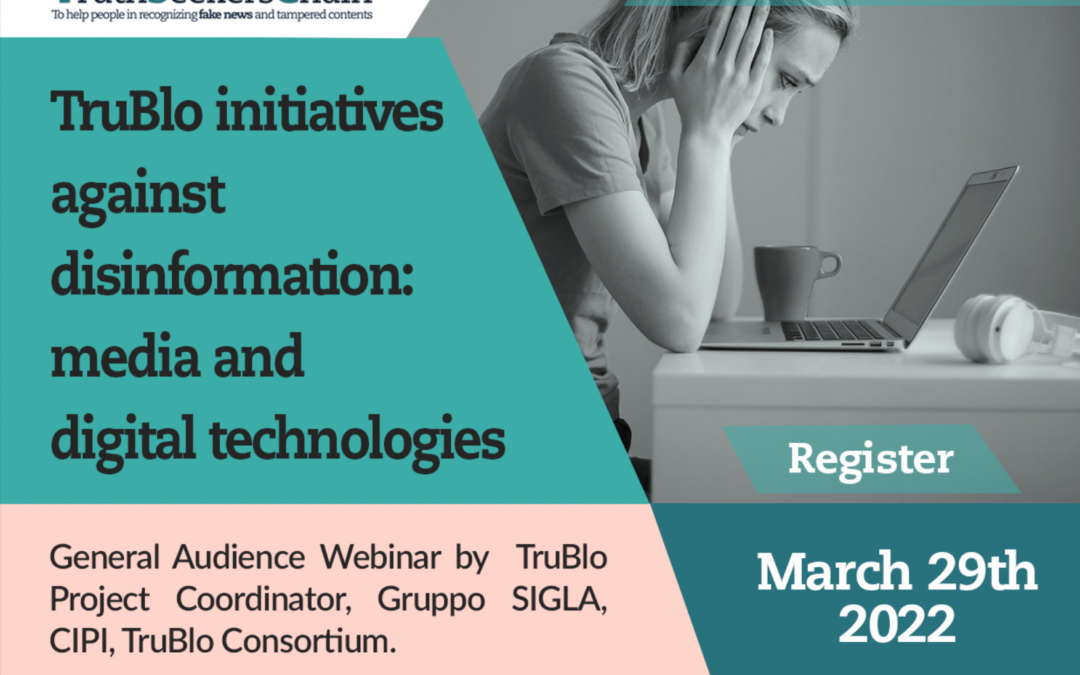
Please join us on Tuesday, March 29 from 09:45 CET for a TruBlo-themed online event “TruBlo initiatives against disinformation: media and digital technologies” organised and hosted by TruthSeekers’ Chain, a project from the First Open Call of TruBlo.
Register here
You will have the chance to hear from ATC about TruBlo (NGI initiative), learn from Deutsche Welle and Thomson Reuters about disinformation and the media industry, and hear from TruBlo teams such as TruthSeekers’ Chain, FAKE, OttCT and TrueBees how they innovate towards trustable content using blockchain technology.
TruthSeekerchain profile: https://www.trublo.eu/truth-seekers-chain/
Homepage of the project: https://truthseekerschain.grupposigla.it/index.html
#digital #technology #blockchain #disinformation #misinformation
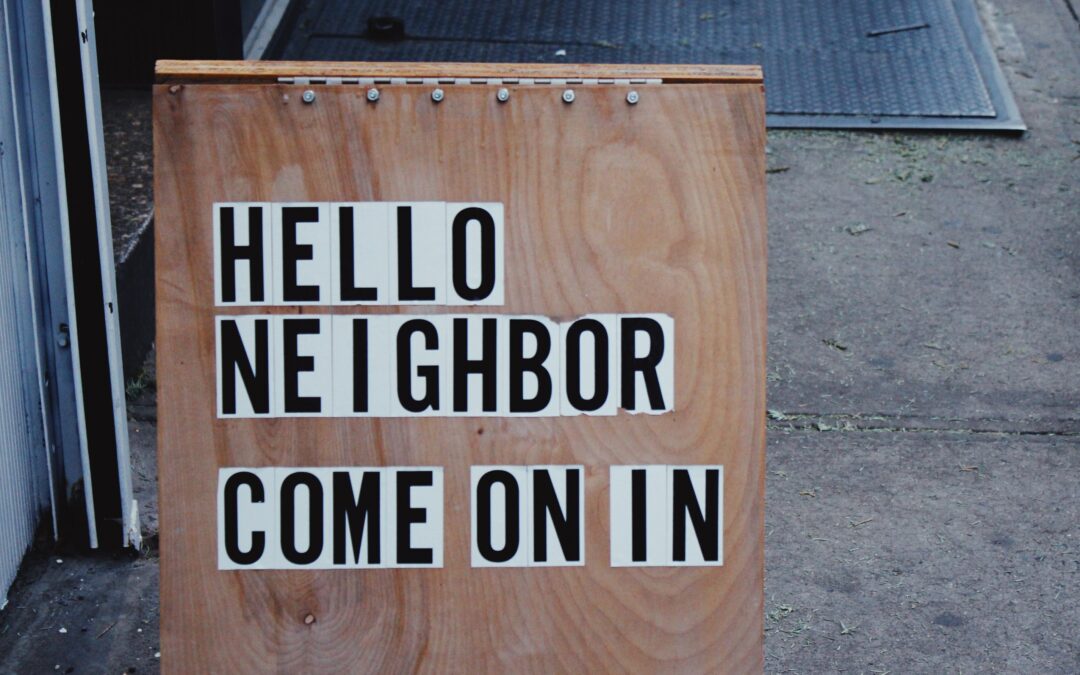
Below is an abstract of a scientific article, which has been accepted for publication by a prestigious journal. The findings are related and useful for the funded project of the team. Their project in TruBlo is called FogBlock4Trust. Findings from the work below are used in the project.
Authors:
Hamza Baniata, Ahmad Anaqreh, Attila Kertesz
Article:
DONS: Dynamic Optimized Neighbor Selection for Smart Blockchain Networks”, Future Generation Computer Systems
Main points:
- We propose DONS for enhancing Blockchain networks in terms of Finality and Fidelity.
- We propose AnoLE, a privacy-aware method for leader election in public Blockchains.
- DONS showed optimum message propagation in different network models and sizes.
- Our methods provide high security and privacy measures compared to current methods.
Abstract:
Blockchain (BC) systems mainly depend on the consistent state of the Distributed Ledger (DL) at different logical and physical places of the network. The majority of network nodes need to be enforced to use one or both of the following approaches to remain consistent:
- (i) to wait for certain delays (i.e. by requesting a hard puzzle solution as in PoW and PoUW, or to wait for random delays as in PoET, etc.)
- (ii) to propagate shared data through the shortest possible paths within the network.
The first approach may cause higher energy consumption and/or lower throughput rates if not optimized, and in many cases, these features are conventionally fixed. Therefore, it is preferred to enhance the second approach with some optimization.
Previous works for this approach have the following drawbacks: they may violate the identity privacy of miners, only locally optimize the Neighbor Selection method (NS), do not consider the dynamicity of the network, or require the nodes to know the precise size of the network at all times.
In this paper, we address these issues by proposing a Dynamic and Optimized NS protocol called DONS, using a novel privacy-aware leader election within the public BC called AnoLE, where the leader anonymously solves the “The Minimum Spanning Tree” problem (MST) of the network in polynomial time.
Consequently, miners are informed about the optimum NS according to the current state of network topology. We analytically evaluate the complexity, security and privacy of the proposed protocols against state-of-the-art MST solutions for DLs and well-known attacks. Additionally, we experimentally show that the proposed protocols outperform state-of-the-art NS solutions for public BCs. Our evaluation shows that the proposed DONS and AnoLE protocols are secure, private, and they acutely outperform all current NS solutions in terms of block finality and fidelity.

Fig. 1. Phases and steps of the proposed DONS protocol. Each step is performed by one (or more) system entity(s).
A step may depend on the result of a preceding step of the current round, or on the result of a subsequent step of the previous round.
Full paper:
DONS: Dynamic Optimized Neighbor Selection for Smart Blockchain Networks”, Future Generation Computer Systems, Volume 130, May 2022, Pages 75-90 https://doi.org/10.1016/j.future.2021.12.010

Creative Commons Attribution-NonCommercial-No Derivatives License (CC BY NC ND).
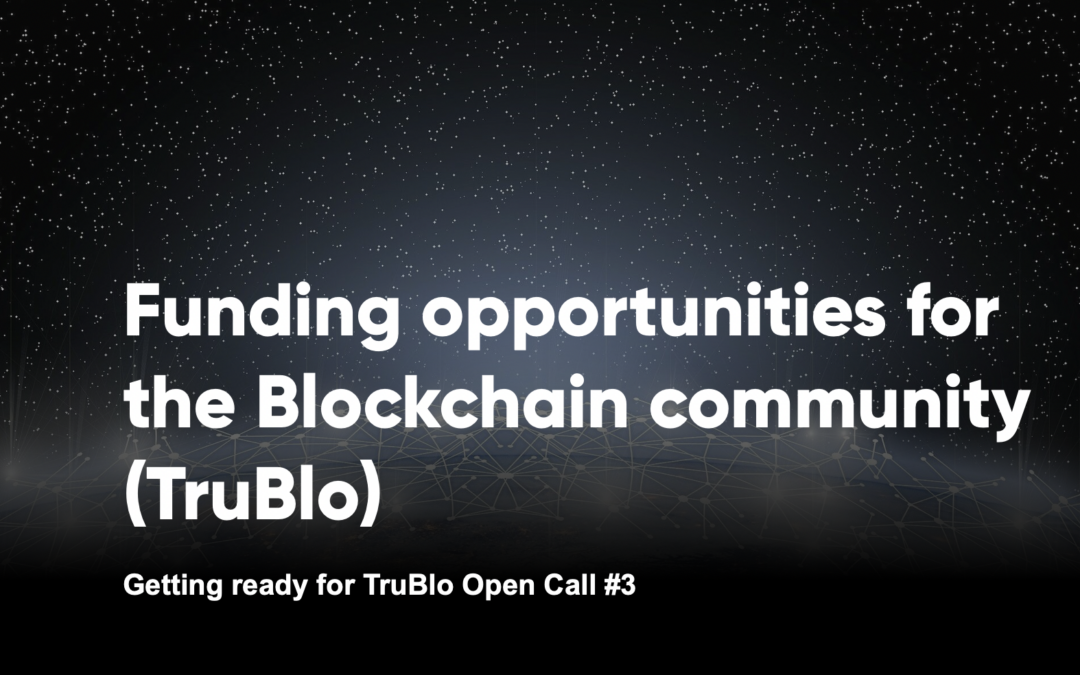
Please join on February 8, 202, 11-12 am, for an info session on how to apply for TruBlo open call. TruBlo offers an opportunity to fund your early-stage idea for trustable content on future blockchains. The event is organized by Berlin Partner, in collaboration with Cluster ICT|Media|Creative Industries and the Enterprise Europe Network.
Up to €175.000 of equity-free funding per project
Target groups are researchers, innovators, developers from academia, startups, high tech companies or natural persons. Selected participants can get up to 175.000 euros for their project. The total available amount of funding is 4,2 million euros. The call will be opened January 27 and closed March 30, 2022.
TruBlo has defined two topics for selectable ideas:
- Trust and reputation models on blockchains
- Proof-of-validity and proof-of-location
25 examples
To see examples of projects which already got funding, please check the “funded projects” section on the TruBlo website. In total 25 projects have already received funding. Examples are a project called TrustCad, aiming to build a digital version of a land registry. Or take Moncon, who want to provide a trustable system to enable micropayments for content.
Besides the introduction to the project and the open call, you will get the chance to get some insides from a successful applicant from one of the previous calls (Mirko Ross, ASVIN GmbH). In TruBlo the company got funding for a project called D-SBOM, which will explore a digital bill of materials for IoT devices.
Even if it is a digital event we would like to have some interaction between the participants. Thus, we do offer up to seven participants the possibility to present themselves and your company within two minutes in front of the audience. If you would like to pitch your idea/project, please get in contact with the organizer February 4, 2022 the latest (first come – first serve).
Please register by February 6, 2022 on the website of Berlin Partner, who is organising the event together with TruBlo:
https://www.digital-bb.de/eventdetail/funding-opportunities-for-the-blockchain-community-trublo-project-1
The event will be held in English.

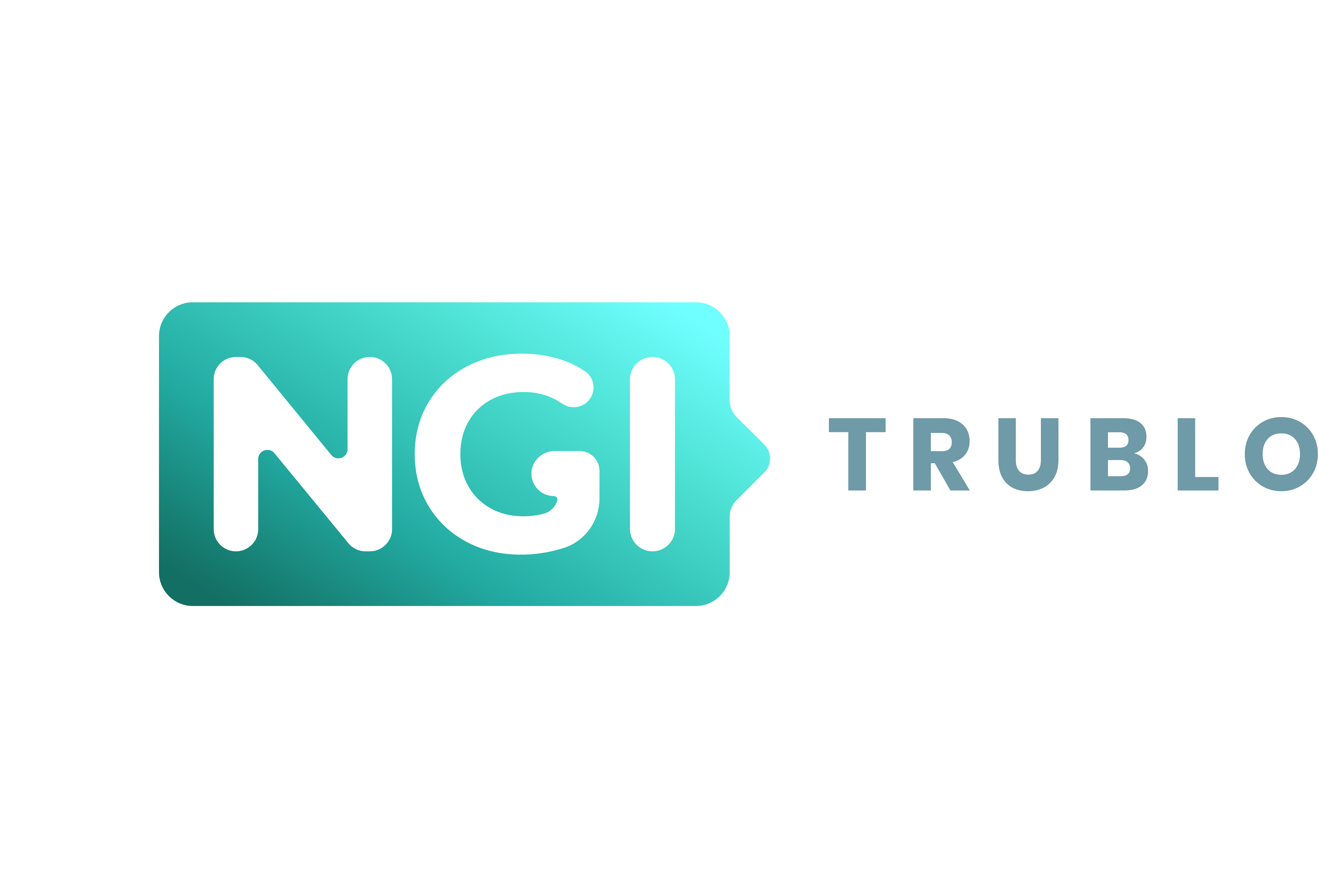



 Visual: Benefits Source: FileChain (Screenshot Website)
Visual: Benefits Source: FileChain (Screenshot Website)




